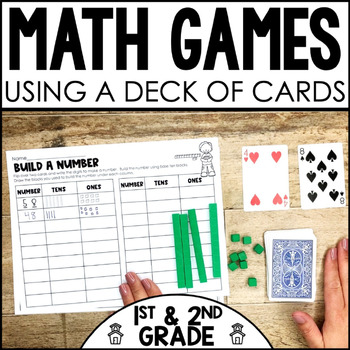Math Card Games | Math Centers | Math Games Stations | Using a Deck of Cards
- PDF
What educators are saying
Description
A simple deck of cards can be a math tool that opens up the opportunity for tons of different math games. This pack of card games are great for classroom or home learning.
We provide you with plenty of opportunities to differentiate each game. We have also included recording sheets for accountability.
Here are the activities included in this resource:
- Number Cards (with & without ten frames)
- Largest & Smallest (comparing numbers & place value)
- Build a Number (place value)
- More & Less (addition, subtraction, & mental math)
- Let's Compare (comparing numbers using symbols)
- Add 2- Top Sum (addition & comparing numbers)
- Add 3- Top Sum (adding 3 numbers & comparing numbers)
- Race to the Bottom (subtraction & comparing numbers)
- Magic 10/50/100 (addition, subtraction, & problem solving)
- Highest Score (addition, subtraction, & problem solving)
- Solo Flip It (addition & mental math)
- Partner Flip It (addition & mental math)
◼︎Download the preview to see exactly what's included in this resource.◼︎
▼▼▼▼▼▼▼▼▼▼▼▼▼▼▼▼▼▼▼▼▼▼▼▼▼▼▼▼▼▼▼▼▼▼▼▼▼▼▼▼▼▼▼▼
If you would like to get updates on NEW and CURRENT resources...
►SIGN UP to receive weekly email freebies
►FOLLOW me on Teachers Pay Teachers
►FOLLOW the Lucky Little Learners Blog
▼▼▼▼▼▼▼▼▼▼▼▼▼▼▼▼▼▼▼▼▼▼▼▼▼▼▼▼▼▼▼▼▼▼▼▼▼▼▼▼▼▼▼▼
Copyright © Lucky Little Learners, LLC.
All rights reserved by author.
Permission to copy for single classroom use only.
Electronic distribution limited to single classroom use only.
Not for public display.
If you have any questions about this resource, please contact me at customerservice@luckylittlelearners.com





